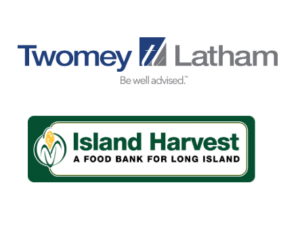Copyrights and trademarks are collectively known as intellectual property rights. A copyright protects an original artistic or literary work. A trademark protects and identifies the source of goods of one party from those of another, and, similarly, a service mark protects and identifies the source of a service, rather than a product.
WHAT IS A COPYRIGHT?
Copyright is a form of protection provided to the authors of “original works of authorship” including literary, dramatic, musical, artistic, and certain other intellectual works, both published and unpublished. The 1976 Copyright Act generally gives the owner of copyright the exclusive right to reproduce the copyrighted work, to prepare derivative works, to distribute copies or phonorecords of the copyrighted work, to perform the copyrighted work publicly, or to display the copyrighted work publicly.
The copyright protects the form of expression rather than the subject matter of the writing. For example, a description of a machine could be copyrighted, but this would only prevent others from copying the description; it would not prevent others from writing a description of their own or from making and using the machine. Copyrights are registered by the Copyright Office of the Library of Congress.
What Works Are Protected?
Copyright protects “original works of authorship” that are fixed in a tangible form of expression. The fixation need not be directly perceptible so long as it may be communicated with the aid of a machine or device. Copyrightable works include the following categories:
- literary works;
- musical works, including any accompanying words
- dramatic works, including any accompanying music
- pantomimes and choreographic works
- pictorial, graphic, and sculptural works
- motion pictures and other audiovisual works
- sound recordings
- architectural works
These categories are viewed broadly. For example, computer programs and most “compilations” may be registered as “literary works”; maps and architectural plans may be registered as “pictorial, graphic, and sculptural works.”
What Is Not Protected by Copyright?
Several categories of material are generally not eligible for federal copyright protection. These include among others: works that have not been fixed in a tangible form of expression (for example, choreographic works that have not been notated or recorded, or improvisational speeches or performances that have not been written or recorded); titles, names, short phrases, and slogans; familiar symbols or designs; mere variations of typographic ornamentation, lettering, or coloring; mere listings of ingredients or contents; ideas, procedures, methods, systems, processes, concepts, principles, discoveries, or devices, as distinguished from a description, explanation, or illustration; works consisting entirely of information that is common property and containing no original authorship (for example: standard calendars, height and weight charts, tape measures and rulers, and lists or tables taken from public documents or other common sources).
How is a Copyright Secured?
The way in which copyright protection is secured is often misunderstood. No publication or registration or other action in the U.S. Copyright Office is required to secure a copyright. There are, however, certain definite advantages to registration.
Copyright is secured automatically when the work is created, and a work is “created” when it is fixed in a copy or phonorecord for the first time. “Copies” are material objects from which a work can be read or visually perceived either directly or with the aid of a machine or device, such as books, manuscripts, sheet music, film, videotape, or microfilm. “Phonorecords” are material objects embodying fixations of sounds (excluding, by statutory definition, motion picture soundtracks), such as cassette tapes, CDs, or LPs. Thus, for example, a song (the “work”) can be fixed in sheet music (“copies”) or in phonograph disks (“phonorecords”), or both. If a work is prepared over a period of time, the part of the work that is fixed on a particular date constitutes the created work as of that date. WHAT IS A
TRADEMARK OR SERVICEMARK?
A trademark is a word, phrase, symbol or design, or a combination of words, phrases, symbols or designs, that identifies and distinguishes the source of the goods of one party from those of others. A service mark is the same as a trademark, except that it identifies and distinguishes the source of a service rather than a product. The terms “trademark” and “mark” are commonly used to refer to both trademarks and servicemarks.
Trademark rights may be used to prevent others from using a confusingly similar mark, but not to prevent others from making the same goods or from selling the same goods or services under a clearly different mark. Trademarks which are used in interstate or foreign commerce may be registered with the U.S. Patent and Trademark Office (“USPTO”). You do not have to register a mark to obtain rights to the mark. You can establish rights in a mark based on legitimate use of the mark. Owning a federal trademark registration on the Principal Register, however, provides several advantages, such as: constructive notice to the public of the registrant’s claim of ownership of the mark; a legal presumption of the registrant’s ownership of the mark and the registrant’s exclusive right to use the mark nationwide on or in connection with the goods and/or services listed in the registration; the ability to bring a lawsuit concerning the mark in federal court; the use of the U.S registration as a basis to obtain registration in foreign countries; and the ability to file the U.S. registration with the U.S. Customs Service to prevent importation of infringing foreign goods.
What do the trademark symbols TM, SM and ® mean?
Any time you claim rights in a mark, you may use the “TM” (trademark) or “SM” (service mark) designation to alert the public to your claim, regardless of whether you have filed an application with the USPTO. But, you may use the federal registration symbol “®” only after the USPTO actually registers a mark, and not while an application is pending. Also, you may use the registration symbol with the mark only on or in connection with the goods and/or services listed in the federal trademark registration.




